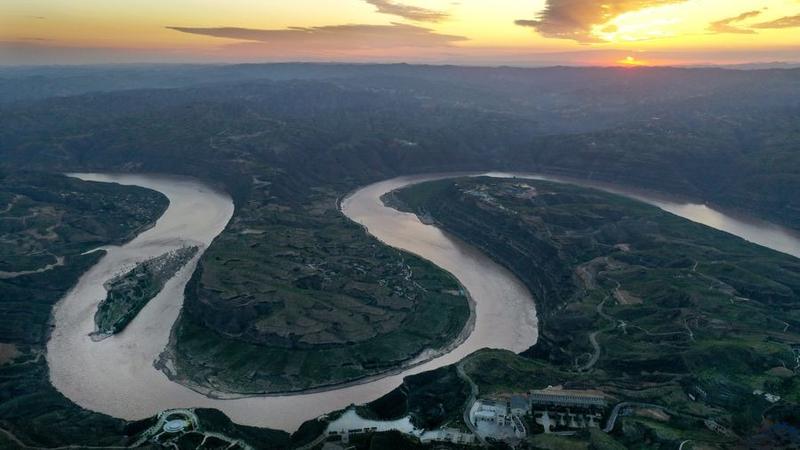Comprehensive protection of Yangtze to be basically in place by next year
 Aerial photo taken on Aug 14, 2019 shows the Qiankun Bay of the Yellow River on the border between Yanchuan county, Northwest China's Shaanxi province, and Yonghe county, North China's Shanxi province. (PHOTO / XINHUA)
Aerial photo taken on Aug 14, 2019 shows the Qiankun Bay of the Yellow River on the border between Yanchuan county, Northwest China's Shaanxi province, and Yonghe county, North China's Shanxi province. (PHOTO / XINHUA)
The first national-level territorial space plan tailored to a specific river basin was recently approved by the State Council, China's Cabinet, a senior environmental and territorial planning official said on Thursday.
"The plan provides comprehensive guidance and oversight for the protection, development, utilization and restoration of the spatial area in the Yangtze River Economic Belt and the Yangtze River Basin, acting as an important basis for local authorities to lay down and carry out spatial plans at all levels," Miao Ze, deputy director of the Ministry of Natural Resources' territorial space planning bureau, told a news conference.
The plan covers the land territory, inland waters and related territorial waters of the Yangtze River Economic Belt and the Yangtze River Basin. The land area of 2.4 million square kilometers includes 11 provinces or municipalities in the Yangtze River Economic Belt and some county-level administrative regions in eight other provincial-level regions in the Yangtze River Basin. In total, it covers 1,173 county-level administrative regions.
READ MORE: Guideline targets health of Yangtze
Upholding the principle of China's first national territorial space plan, issued in 2022, Miao said that management of the ecological environment, arable land, permanent basic farmland, and urban and rural development should be subject to a "red line" to protect food production and the area's ecological, geological, cultural and historical features.
The plan said that by 2035, the ecological conservation red line in the Yangtze River Economic Belt and the Yangtze River Basin should cover an area of no less than 806,600 sq km, and the area of arable land should be no less than 400,000 sq km, with a minimum of 330,000 sq km designated as permanent basic farmland. Urban development should be confined to an area of 79,700 sq km.
Miao said the comprehensive protection of the Yangtze River will be basically in place by next year, with inter-regional coordination along the river notably improved. By 2035, China is expected to establish an economic belt that is healthy, tranquil, beautiful, well-connected, prosperous, habitable and distinctive.
The development of the Yangtze River Basin should be tailored to local conditions to establish modern, efficient and high-quality agricultural areas, making it a key region for national food security and a model area for agricultural modernization and rural vitalization, the plan said.
One area of focus is the protection of prime farmland in areas along the middle and lower reaches of the Yangtze River and in the Sichuan Basin to consolidate the proportion of arable land in the Yangtze River Basin in the national total and reinforce its role as a cornerstone of the nation's food reserves. The plan also encouraged the leverage of regional characteristics to develop a diverse food supply system, such as fostering distinctive agricultural practices in hilly and mountainous areas, and developing marine ranches based on fishery resources.
ALSO READ: Ancestral maneuvers
The region's population and economic output account for about half the national totals, and Miao said the plan would help drive the coordinated development of the Yunnan-Guizhou-Sichuan-Chongqing region, the middle reaches of the Yangtze River and the Yangtze River Delta region.
The plan called for the creation of a high-tech industry hub based on urban clusters, metropolitan areas and central cities to advance the establishment of a new development pattern, with strict restrictions to be imposed on the establishment of new chemical industries along the river.
The plan also incorporated the protection and inheritance of the Yangtze River culture, proposing the exploration of multiple natural heritage values and the integration of the Yangtze River's natural landscape, historical culture and urban-rural living spaces.
"The enactment and execution of the plan will undoubtedly be instrumental in furthering the high-quality development of the Yangtze River Economic Belt, assisting in the establishment of a new development pattern, and promoting the comprehensive construction of a modernized socialist nation," Miao said.


